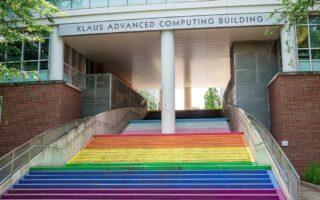[ad_1]
Los Angeles has seen better days. Traffic is. Poorhomelessness still remain Near record highs And housing costs are among the worst in the country. Many years ago These factors contributed to the first shock: L.A.’s population began shrinking.
This is not a pandemic hangover. With a few exceptions, the local economy has recovered again. Many key industries have proven to be resilient to remote working. You still can’t film over Zoom, and the year-round perfect weather continues to attract digital nomads. The rapid recovery has led to the paradox of putting LA’s pre-pandemic problems into overdrive. By clogging the expressway Eating limited habitat and forcing residents who cannot afford to live
The city’s traffic and housing crises go back a century. When Los Angeles became dependent on automobiles and exclusionary zoning Since then Municipalities throughout the country From Las Vegas to Miami and almost every suburb in between. L.A.’s example has been followed. By giving more importance to cars than public transportation. and segregation of residences by income. Predictably, Los Angeles’ problems have become the problems of American cities.
In the past few years State policy maker housing reformer And many urban planners understand that L.A.’s problems are reversible. and begin to chart alternative paths for the future. The city has invested heavily in transportation. And that’s partly because of pressure from pro-housing legislation across the state. This has led to a surge in new housing permits, although rampant NIMBYism remains an obstacle. But the city’s progress is becoming clearer: Los Angeles is slowly becoming more urbanized. Renovating America’s Most Iconic Area
L.A.’s mission to reinvent itself has national implications. Expert urban planners and policymakers are watching how Los Angeles addresses the growing problems in its cities. They know a future of overcrowding and unaffordability lies ahead. If they hadn’t intervened.
It’s often said that Los Angeles is planned around cars, but it’s actually built around the world’s largest mass transit system. In the early 20th century, Pacific Railway Bringing together hundreds of historic city centres, from the riverfront to Venice. The rest of LA is subdivided into one of the largest road networks in history. It captures growth according to a connected and interconnected model.
Only in the 1930s did the city take off. New design yourself for driving Freeways begin to erode the grid Spewing pollution all over Los Angeles, railroads closed. Walking and biking became unpleasant and unsafe. This transformation takes place in present-day LA, where cars crash. kill There are more people than violent crimes. And drivers spend an average of 62 hours per year. sitting in traffic– until it became a model for suburbs all over the country The average American now drives an hour per day.
Housing conditions are equally gloomy. By some measures Los Angeles has the worst housing affordability crisis in the country. If middle-class families want to own a home, they should go elsewhere. The median home price in LA is more than 10 times Median household income—more than twice the healthy ratio.
Many Angelenos locked out of home ownership are still stuck paying some of the highest bills in America. Rent– Most residents spend more than 30 percent of their income on housing. A quarter of residents spend at least half their time. to reduce costs Many tenants have doubled or tripled. This results in the highest prices in the country. overcrowding Like. About 75,000 residents of Los Angeles County are homeless at all.
The housing shortage is by design: Starting in the 1960s, policymakers tightened zoning rules. and reduce the residential area of the city Capacity 60 percent according to the law Los Angeles can’t grow. Currently, apartment building is still being built. break the law In an area of about three-quarters of the residential area Most of which land is effectively reserved. McMansion– The situation is getting worse in suburbwith zoning resulting in virtually no new housing. The crisis has spread to once-affordable places like Phoenix, as local growth clashes with strict zoning in cities. more and more
Until recently Almost every development in cities bordering LA like Pasadena or Culver City. It requires expensive environmental reviews and endless public hearings. Both of which are easily hijacked by NIMBYs. Impact fee Increase the price of new housing by tens of thousands of dollars. for a long time the number License issued All of Greater Los Angeles looks like the decadent city of Detroit. More than in a thriving city like Seattle.
latest city population decline It might make you think that no one wants to live there, but Los Angeles actually doesn’t tolerate anyone.
After decades of dysfunction The twin crises in L.A. are starting to look solved.
Take public transit: Los Angeles is currently building one of the most ambitious rail expansions in North America. which will be like that rival The country’s leading system Thank you for your part. Temple MThis is a half-way sales tax increase that voters approved in 2016. The city is slated to open rail service to Los Angeles International Airport by the end of the decade. as well as new trains extending from West Los Angeles to East Los Angeles in 2023. LA Metro complete Regional connector which connects two light rail lines This makes it possible to travel across town for free.
All of this new rail will be complemented by an expanded bus, bicycle and pedestrian infrastructure network soon, in March. group-led coalition A road for everyone passed Measure HLAwhich will increase More than 200 miles of protected bus and bike lanes and hundreds of redesigned, pedestrian-friendly streets in the coming decades if officials can unlock new revenue through congestion pricing—which will push some Angelenos out of their cars—the city might finally be able to free up traffic.
The housing situation is also turning around. If appropriate and start taking action Recent experience shows that simply relaxing overly restrictive rules can unlock a surge in new home construction. In 2022, Los Angeles issued more permits than at any time in the last 36 years, despite prices. The average home will remain around $1 million, but rents are down about 5 percent compared to late 2023.
Several interventions have made this possible. Since 2017, Los Angeles has allowed nearly 35,000 accessory dwelling units, most of which were illegal before the state intervened in 2017. Thanks to the law For a “fair share” of the newly renovated state, cities across L.A. County would be required to allow thousands of new homes. In the next few years Things like Santa Monica will have to make allowances. 1,500 new homes In the next few years That’s more than the city has allowed in decades. A 2022 rule Giving the green light to construction of affordable housing in a commercial zone has Costco agreeing to add 800 apartments above a planned storefront in South Los Angeles. Other state laws have Already eliminated parking orders, flexible allow and rush Townhouse zoning
However, resolving the crisis still requires a lot of work by one state. estimateGreater LA must allow 168,000 homes to be built each year to end the housing shortage. Even in the formerly productive year of 2022, the region allowed fewer than 60,000, and in a major setback. The City Council voted in December to conserve Single-family zoning, which prohibits new apartments in nearly three-quarters of Los Angeles. (Don’t mention that the city assigned the report. undergo treatment that the decision will cause division)
But reform continues to rage locally with the YIMBY movement on the rise. Ten years ago The idea of repealing the apartment ban in Los Angeles is unthinkable. Now it seems inevitable. Community projects that focus on mass transit systems It was part of a ballot measure that Angelenos were able to adopt in 2016. Facilitate Construction of tens of thousands of new apartments near mass transit. When Mayor Karen Bass took office in 2022, she issued Executive Directive 1 to expedite the approval process. Plus kindness State incentive programs For projects that agree to keep rents low The initiative has attracted more than 20,000 applicants for new homes and continues to grow. In almost every public hearing expected to collide with Rich Habitat LA Volunteers are eager to share the good news.
A century ago Los Angeles pioneered the urban model that most Americans make the mistake of imitating. After decades of strict zoning and car-centric growth, Los Angeles is also figuring out what’s next. The city is starting to address car dependency by reintroducing bus routes, bike lanes and rail lines. A neighborhood locked down by gentrification for half a century is finally growing again. Hundreds of urban districts across the country are in dire need of similar interventions.
If history is any guide L.A.’s ambitions may reshape American cities once again This time, make it better than before.
[ad_2]
Source link



